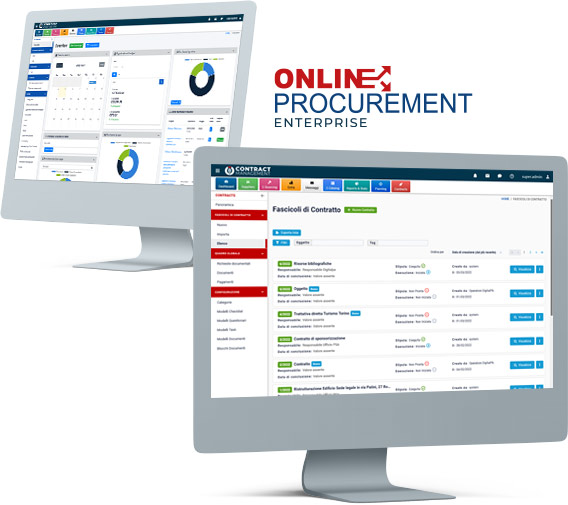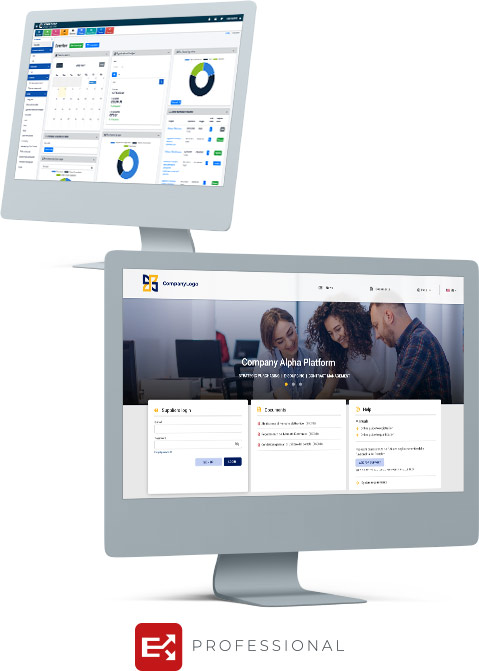Supplier management: the essential guide

According to a Gartner survey of 275 global supply chain executives, improving supplier performance is one of the top priorities that procurement executives want to invest in to ensure supply continuity and create value.
For procurement professionals, dealing with suppliers is their bread and butter, but transforming that relationship into a true partnership that goes beyond simple negotiation requires commitment, transparency, and trust on both sides, as well as a solid core strategy.
In fact, supplier management is a set of coordinated and complex activities that includes sourcing new companies and professionals, the qualification process, the management of negotiations and orders, the segmentation and evaluation of their performance, the execution of contracts and payments, and risk mitigation.
Only a digital, centralized solution such as Online Procurement can truly help buyers simplify supplier tracking throughout the collaboration and maximize benefits.

How to best manage suppliers to drive procurement efficiency
Effective supplier management streamlines processes, increases savings, improves the quality of collaboration, and ensures higher levels of supplier compliance. To build a successful Supplier Relationship Management (SRM) program, collecting supplier information and documents in a structured and digital way is just the first step. Here are 9 best practices to help you build your strategy.
- Define business objectives: Aligning the short- and long-term objectives of the procurement department with those of the company and its key stakeholders is key to making procurement processes contribute to the business strategy and simplifying the analysis of the results achieved.
- Establish qualification criteria: Identifying the requirements for each commodity category is not only functional for the qualification process but also helps streamline and homogenize the way they are handled.
- Centralize information: A comprehensive view of each supplier’s data, documents, risk profile, rating, and order history supports decision-making and significantly reduces the time spent on manual audits.
- Segment suppliers: The theory behind supplier relationship management recommends ranking suppliers according to their strategic importance to the business, performance, and risk factors, and creating specific goals and metrics for each segment.
- Select KPIs: Working together on common and objective metrics allows both parties to monitor progress and difficulties with greater transparency.
- Access up-to-date products and pricing: Direct access to products and price lists updated in real-time by the suppliers themselves speeds up purchasing processes, standardizes procedures, and reduces costs through economies of scale.
- Keep track of communications and documents: How often do important negotiation details get lost in email exchanges? Centralizing communications and documents in a digital repository makes it easier to find information and keep everything up to date.
- Monitor performance: A system for evaluating performance from an operational perspective – indicators such as delivery time, contract compliance, etc. – but also from a collaborative standpoint, based on qualitative parameters, makes it possible to identify the most reliable suppliers and optimize purchasing costs.
- Risk prevention and mitigation: to ensure continuity of supply, it is essential to know which suppliers could cause bottlenecks or disruptions, and to proactively monitor the risk profile: financial, geographic, ESG.
Supplier qualification and onboarding
We devote a separate section to supplier qualification and onboarding processes because they are the foundation for any procurement team to optimize costs, reduce supply-related risks, and improve internal efficiencies.
The Online Procurement suite provides flexible tools to better organize and interact with your supplier network, making request validation and documentation control activities faster and more accurate.
Digital Supplier List Management
Online Procurement provides extensive capabilities to customize the classification of suppliers into different lists and/or product categories, with ad hoc qualification requirements for each type of supplier. Once the requirements are set, the suppliers themselves complete the master list.
Qualification Request Management
On the platform, buyers can easily and intuitively qualify suppliers with a single-screen view of the data and documents entered by the supplier in the request form.
Single Digital Archive and Document Review
Documents, communications, and supplier-specific performance and risk KPIs are collected in convenient digital files, with an integrated system of automatic due date reminders to reduce the workload of the purchasing department.nze.
Procurement management costs: the role of suppliers
It is estimated that in manufacturing companies, purchasing accounts for about 50-60% of the turnover: identifying the best suppliers in the market and in the relevant category is, therefore, a key lever for a cost reduction strategy and, in particular, for reducing the total cost of ownership (TCO), one of the most important procurement metrics.
Among the useful methodologies for reducing costs, not in the sense of simply “cutting” but of optimizing from a development perspective, we highlight 3.





